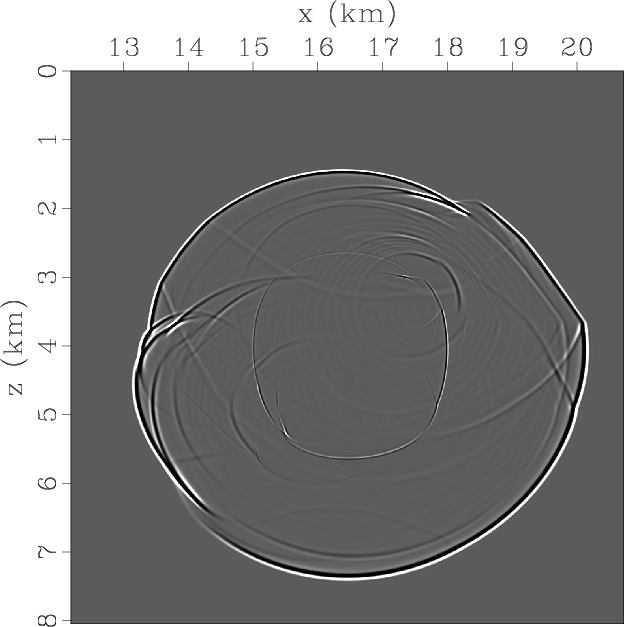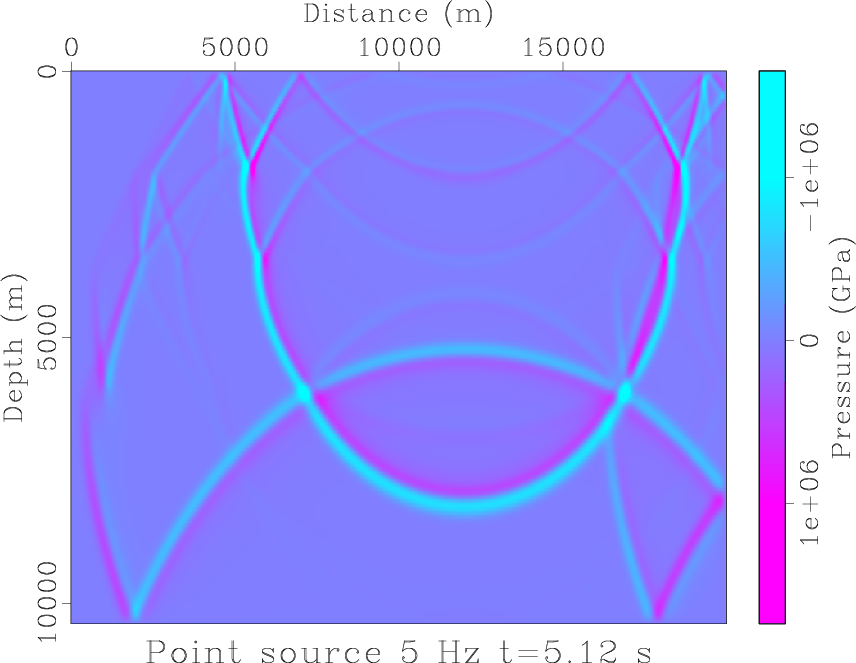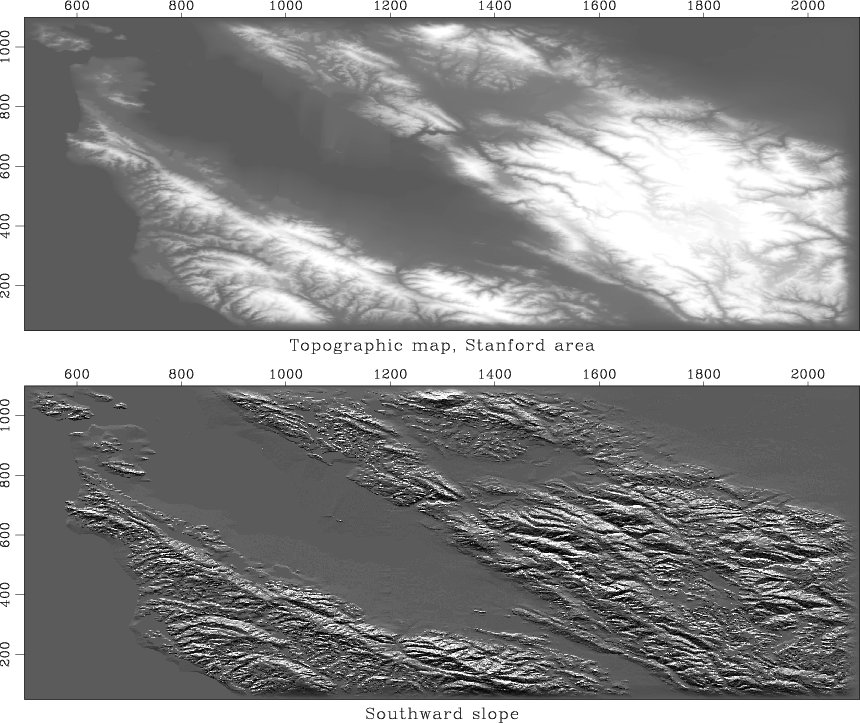A new paper is added to the collection of reproducible documents:
Simulating propagation of separated wave modes in general anisotropic media, Part I: qP-wave propagators

Wave propagation in an anisotropic medium is inherently described by elastic wave equations, with P- and S-wave modes intrinsically coupled. We present an approach to simulate propagation of separated wave modes for forward modeling, migration, waveform inversion and other applications in general anisotropic media. The proposed approach consists of two cascaded computational steps. First, we simulate equivalent elastic anisotropic wavefields with a minimal second-order coupled system (that we call here a pseudo-pure-mode wave equation), which describes propagation of all wave modes with a partial wave mode separation. Such a system for qP-wave is derived from the inverse Fourier transform of the Christoffel equation after a similarity transformation, which aims to project the original vector displacement wavefields onto isotropic references of the polarization directions of qP-waves. It accurately describes the kinematics of all wave modes and enhances qP-waves when the pseudo-pure-mode wavefield components are summed. The second step is a filtering to further project the pseudo-pure-mode wavefields onto the polarization directions of qP-waves so that residual qS-wave energy is removed and scalar qP-wave fields are accurately separated at each time step during wavefield extrapolation. As demonstrated in the numerical examples, pseudo-pure-mode wave equation plus correction of projection deviation provides a robust and flexible tool for simulating propagation of separated wave modes in transversely isotropic and orthorhombic media. The synthetic example of Hess VTI model shows that the pseudo-pure-mode qP-wave equation can be used in prestack reverse-time migration (RTM) applications.
This paper is the first contribution from Tongji University in Shanghai, China.





